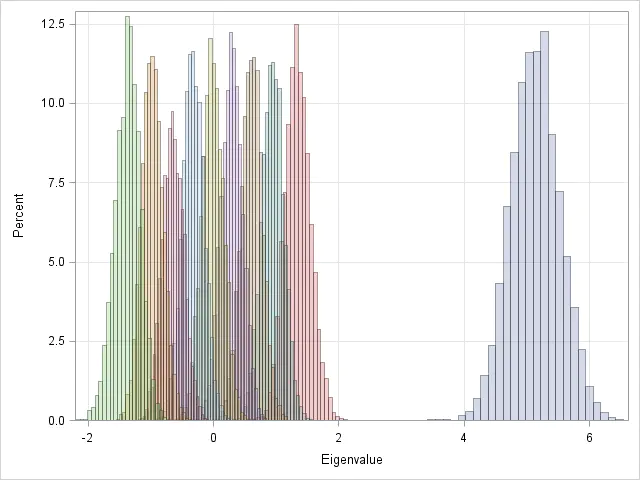Random Matrix Theory for Communication Systems

The performance of multiple-input multiple-output (MIMO) communication systems is related to the eigenstructure of the channel matrix H (channel eigenmodes) or, more exactly, to the non-zero eigenvalues of HH†. Therefore, the probabilistic characterization of these eigenvalues is necessary in order to derive analytical expressions for the average and outage performance measures of the system. In MIMO wireless communications, the channel matrix H is commonly modeled with Gaussian distributed entries. This results in HH† being a Wishart random matrix. The Wishart distribution and some closely related distributions have been widely studied during the sixties and seventies in the mathematical literature, due to its importance in various areas of research such as the analysis of time series or nuclear physics. More recently, the statistical properties of the eigenvalues of Wishart matrices have been investigated and effectively applied to analyze the information theoretical limits of MIMO channels as well as the performance of practical MIMO systems.
We consider a class of Hermitian random matrices that contains as particular cases the classical Wishart, the correlated central Wishart, the correlated central Pseudo-Wishart, and the noncentral Wishart. We first obtain expressions for the distribution of the ordered eigenvalues; in particular, for i) the joint cdf, ii) the marginal cdf’s, and iii) the marginal pdf’s. Then, for simpler tractability, we develop first-order Taylor expansions that translate into convenient SNR gain and diversity gain characterizations of the performance in communication systems.
Papers
- Luis G. Ordóñez, Daniel P. Palomar, and Javier R. Fonollosa, “Array Gain in the DMT Framework for MIMO Channels,” IEEE Trans. on Information Theory, vol. 58, no. 7, pp. 4577-4593, July 2012.
- Luis G. Ordóñez, Daniel P. Palomar, Alba Pagès-Zamora, and Javier R. Fonollosa, “Minimum BER Linear MIMO Transceivers With Adaptive Number of Substreams,” IEEE Trans. on Signal Processing, vol. 57, no. 6, pp. 2336-2353, June 2009.
- Luis G. Ordóñez, Daniel P. Palomar, and Javier R. Fonollosa, “Ordered Eigenvalues of a General Class of Hermitian Random Matrices With Application to the Performance Analysis of MIMO Systems,” IEEE Trans. on Signal Processing, vol. 57, no. 2, pp. 672-689, Feb. 2009.
- Luis García-Ordoñez, Daniel P. Palomar, Alba Pagès-Zamora, and Javier R. Fonollosa, “High-SNR Analytical Performance of Spatial Multiplexing MIMO Systems with CSI,” IEEE Trans. on Signal Processing, vol. 55, no. 11, pp. 5447-5463, Nov. 2007.